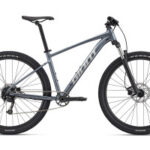If you’re immersed in the world of cycling, you’ve probably encountered the cryptic phrase “n+1.” The Velominati Rules, a tongue-in-cheek set of cycling commandments, famously defines it:
The correct number of bikes to own is n+1.
While the minimum number of bikes one should own is three, the correct number is n+1, where n is the number of bikes currently owned. This equation may also be re-written as s-1, where s is the number of bikes owned that would result in separation from your partner.
For many cycling enthusiasts, the n+1 bikes principle resonates deeply, often serving as a playful justification for expanding their bike collection. In my early days of தீவிர cycling passion, I wholeheartedly embraced this philosophy, even before I knew it had a name. My personal bike stable quickly escalated from a single Fuji road bike to encompass a diverse range: a dedicated road bike, a fixed gear for focused training, a light touring bike for adventures, a practical commuter/touring bike, a convenient folding bike, and even a single-speed folding bike – you get the picture.
As cycling evolved from a hobby into a central part of my lifestyle, my fascination with bicycles grew exponentially. Each n+1 bike purchase was rationalized with compelling logic. “I need a bike specifically for commuting.” “This one will serve as a reliable backup.” “A fixed gear is essential for honing my spin.” “A single speed is perfect for low-maintenance, easy cleaning rides.”
The justifications continued to flow: a bike for randonneuring endurance rides, another for leisurely summer vacations and future bike tours, a stylish mixte frame “just because,” a limited edition model for its exclusivity, and a vintage bike because it’s no longer in production and might be the last chance to own a piece of cycling history.
Thankfully, the n-1 scenario – where acquiring a new bike leads to household friction – doesn’t exist in my home. There are no disapproving glances when a new bicycle catches someone’s eye and the thought, “Have you seen this bicycle? I think I may need it,” is voiced. We operate on a policy of transparency, openly discussing bike purchases and their costs without hidden agendas or fibs. The concept of one partner forbidding the other from buying a bike is foreign to us. We both understand the intrinsic “need” for bikes. Our dining room, which doubles as a bike storage and maintenance area, stands as testament to this shared understanding.
However, with the benefit of time and experience, I’ve come to realize that the n+1 bikes principle, while amusing, leans more towards playful exaggeration than absolute truth. It’s a running joke within the cycling community, a nod to the ever-present desire for “just one more bike.” While manufacturers skillfully market specialized bikes for every conceivable cycling discipline and terrain, and we can always invent reasons to justify another purchase, the question remains: how many bikes do we actually need?
 Rivendell Romulus
Rivendell Romulus
A classic Rivendell Romulus bicycle, showcasing timeless design and craftsmanship, representing the allure of owning multiple high-quality bikes.
I take pride in my collection of bikes. Each one was acquired after careful consideration and patient searching. However, amassing a stable of bicycles isn’t an extraordinary achievement. It primarily requires disposable income, available time for browsing and purchasing, and a genuine passion for bicycles.
Over the years, I’ve also discovered that the n+1 bikes approach doesn’t perfectly align with my personal riding habits. In reality, I consistently ride three main bikes: my dependable Surly Long Haul Trucker for robust touring, my nimble Rivendell Quickbeam for everyday rides, and our Co-Motion Java tandem for shared adventures. While I cherish my Rivendell Romulus, Bike Friday Pocket Rocket, and Rawland dSogn as ideal solo weekend steeds, the current focus on tandem riding means these bikes see less outdoor action these days.
My solo bike rides would likely be more frequent if I were engaging in more solo long-distance cycling, but tandem touring and randonneuring have become my preferred styles. Consequently, the other bikes are brought out for occasional spins, but mostly reside in what we affectionately call the Dining Room Bike Shop.
In contrast, my partner, Felkerino, embodies the n+1 bikes spirit more fully than I do. He regularly rotates through the bikes on his side of our shared bike space. He enjoys switching his ride every two or three weeks, ensuring each bike receives equal attention and affection. I, on the other hand, tend to concentrate my riding time on a select few favorites within my collection.
Despite not riding them all equally, I genuinely appreciate each of my bikes. Except for a brief, tumultuous period with a Bike Friday Tikit, I’ve meticulously dialed in the fit and comfort of each, ensuring they perform well for both short commutes and long-distance adventures. It’s undoubtedly advantageous to have bikes finely tuned for specific purposes like brevets, mixed-terrain riding, commuting, and touring, but it’s certainly not a necessity for enjoying cycling.
Realistically, I don’t ride each of my bikes enough to truly justify owning them all from a purely practical standpoint. For now, I maintain my bike collection as a cherished indulgence. They are already part of my life, and I hold onto the aspiration of riding them all more frequently in the near future. Perhaps tomorrow will be the day. Or maybe next week when the weather improves.
The allure of new bikes remains. I still admire them, contemplate their riding characteristics, and envision how they might complement my existing bike family. The idea of the “future bike” is perpetually enticing, and the desire to acquire it persists. However, in practical terms, my n+1 bikes days are currently on hold. Our dining room, already a bustling bike hub, is simply too crowded to accommodate further additions.

